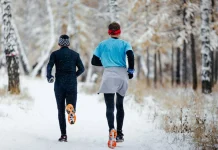
Why are so many good runners good at other sports?
By Mark Blomeley for The Runner's Tribe' Run School
When I meet with an elite runner, whether a sprinter or distance athlete, the first thing I’m intrigued about is whether running was always their main sport. The thing I essentially come to expect now is that they were actually good at either one other sport or multiple sports up until very late high school. Quite often they weren’t winning nationals or becoming a world junior on the track but were starting to show signs of talent.
The question I ask myself is, can this be replicated or does it purely come from the talent of the individual? Obviously, talent plays a major role, but I believe deploying work ethic in the right areas when you’re young also has a big role to play.
One factor is movement variation and learning how to move in different ways and learning fundamental movement patterns. This is something I coach and I’m passionate about because it has an amazing ability to prevent injuries. However, energy system training is perhaps an even greater predictor of future athletic potential.
There are three main energy systems that operate together to produce energy for athletic performance. These energy systems are all trainable but best trained in isolation. In other words, to maximise, their potential, they should be trained so you target the specific energy system you need within your sport.
If you’re a distance athlete when you’re young and only train as a middle to long distance runner then potentially around 95% of your training develops the aerobic energy system. The remaining 5% would develop the Anaerobic Glycolysis system. In other words, the ATP-CP system is never specifically targeted or trained and therefore its ability produce energy is limited.
When athletes participate in other sports other than track then they are forced to train the 2 other energy systems. For example, many middle and long distance runners tend to have a history of playing sports such as hockey, football, and AFL. These sports required good aerobic capacity but in order to be successful in these sports, particularly at a young age they require quickness over 5-20m. In other words, well develop ATP-CP energy systems.
So how do I think this applies?
There’s the obvious, it gives them a strong kick or change of speed that makes them potent when they race. Then there’s the less obvious. Training at speed helps to improve running efficiency and ultimately your maximum speed is going to be higher. There’s little research around to support whether these assumptions are valid. However the fact is many great athletes have been good at multiple sports, so we need to encourage this while still giving kids a high exposure to athletics.
END
For more information from Mark check him out on instagram or snapchat
RT’s Run School featuring Mark Blomeley. Mark is a strength and conditioning coach with over 10 years experience in the sports and fitness industry. Currently, in Brisbane, he is a specialist strength and conditioning coach for runners from international standard elites to the everyday runner.






























